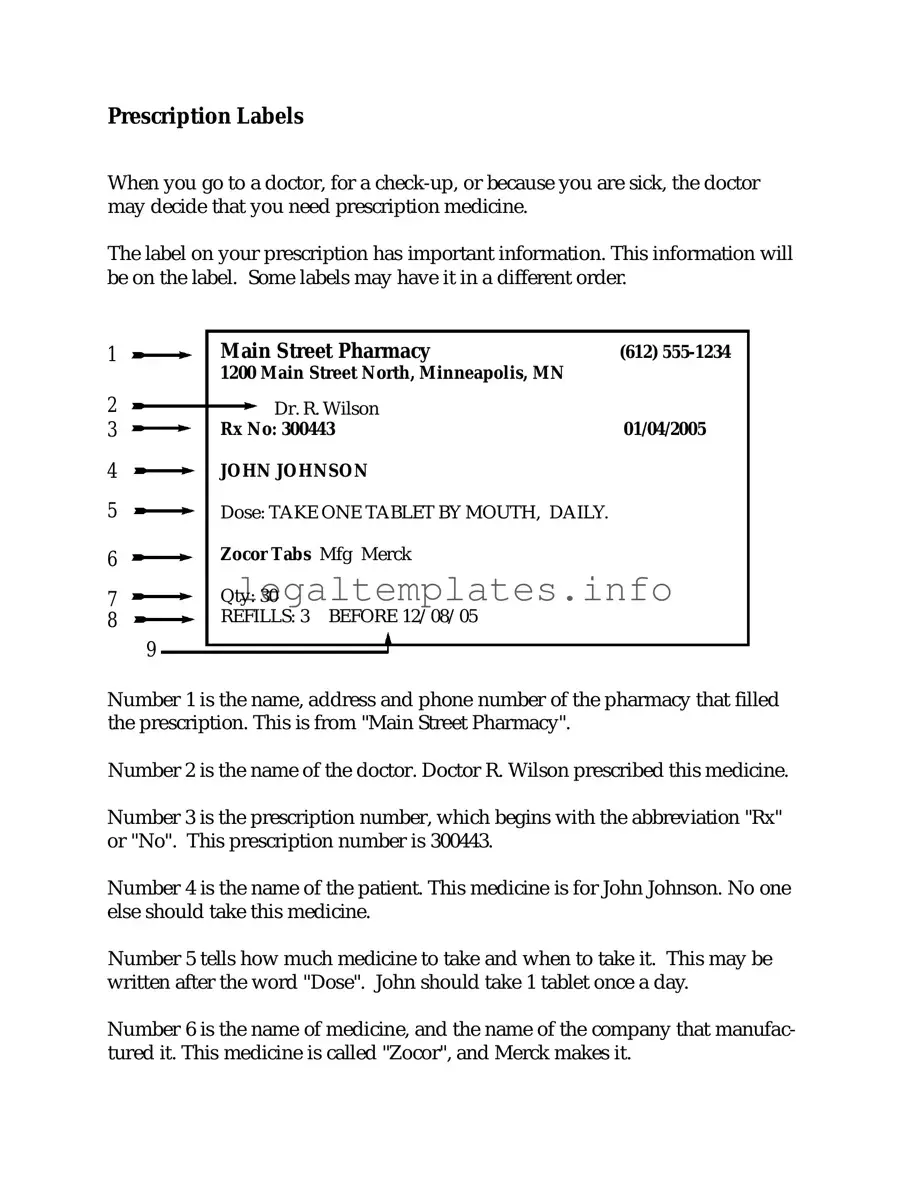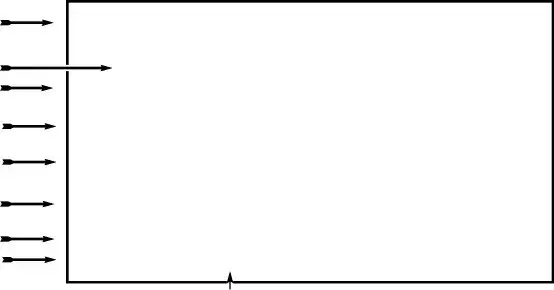The Prescription Label form shares a resemblance with the Patient Information Leaflet (PIL) that accompanies medication. Both documents serve to inform users about the proper use of a product, side effects, and safety precautions. The PIL, like the Prescription Label, is crucial for ensuring that patients are fully informed about the medication they are taking, including what it is for, how to use it, and potential interactions with other drugs.
Medication Guides are another type of document similar to Prescription Labels. These guides are required for certain medications that have specific educational requirements by the Food and Drug Administration (FDA). Medication Guides, much like Prescription Labels, provide patients with information on the use of medication, but they tend to include more detailed safety information and instructions on use, aimed at preventing serious adverse effects.
Over-the-counter (OTC) drug labels closely resemble Prescription Labels in their purpose and content. Both types of labels include vital information such as active ingredients, purpose, usage instructions, warnings, and side effects. However, OTC drug labels are designed for the general public and are found on products available without a prescription, thereby requiring the information to be understandable without healthcare provider guidance.
Drug Facts Labels, typically found on OTC medications, have similarities with Prescription Labels. They are formatted to help consumers quickly find and understand information about the drug they are taking, including active ingredients, uses, warnings, and directions, similar to what is found on Prescription Labels, albeit in a standardized format for easier consumer comprehension.
Emergency Contact Cards are somewhat parallel to Prescription Labels in that they contain crucial, potentially life-saving information in a compact form. While Emergency Contact Cards detail personal identification and emergency contact information, Prescription Labels provide essential information about medication. Both are designed to convey critical information succinctly and effectively in situations where it might be urgently needed.
Allergy Alert Cards are similar to Prescription Labels in the nature of the information they convey. These cards inform others about the card carrier's specific allergies, much like Prescription Labels inform the user and caregivers about the specific medications a person is taking, including possible allergic reactions or side effects to be aware of, thus preventing harmful exposures or interactions.
Vaccine Information Statements (VISs) have a notable similarity to Prescription Labels. VISs are informational documents provided to recipients of vaccines, detailing the benefits and risks of a vaccine. Like Prescription Labels, VISs play a critical role in informed consent and ensuring that individuals are well aware of important health information related to their care.
Informed Consent Forms, used in healthcare settings before procedures or participation in research, share objectives similar to those of Prescription Labels. These forms contain detailed information about the procedure, potential risks, and benefits, ensuring that the patient or participant is fully informed prior to proceeding. Prescription Labels similarly ensure that patients are informed about their medications, underscoring the importance of understanding in healthcare decisions.
Nutrition Facts Labels on food products, though different in context, share a purpose similar to Prescription Labels. They provide consumers with important information about the product's content, such as serving size, calories, and nutrients, aiming to guide individuals in making informed decisions about their intake, analogous to how Prescription Labels guide medication intake.
Care Instructions for medical devices or post-surgery care similarly encompass critical information for the proper use and maintenance of medical equipment or recovery after a procedure. Like Prescription Labels, they are designed to ensure the user's safety and effectiveness of the care or device provided, highlighting the importance of clear and accessible instructions in patient care and outcomes.

